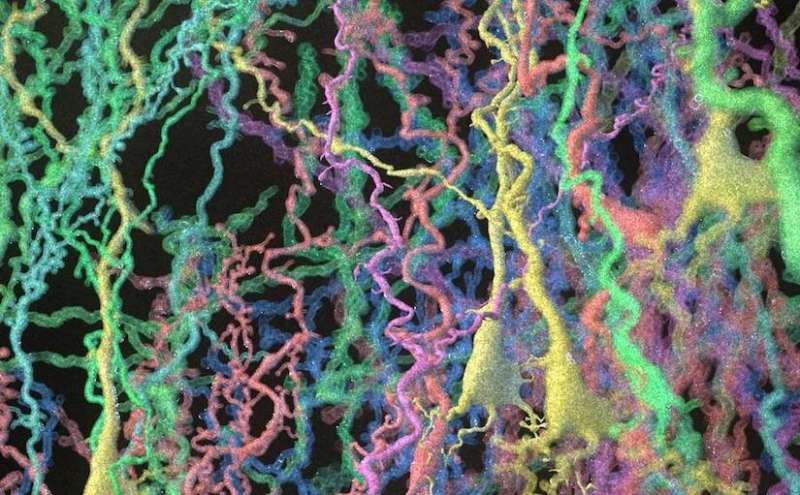Scientists develop new methodology to genetically modify lab mice and human cells

A team led by Cedars-Sinai has designed a rapid method to genetically alter laboratory mice and then used this method to produce personalized animal models of pediatric glioma, an aggressive type of malignant brain cancer in children.
The new method overcomes several drawbacks in current techniques. The goal is to make it easier for laboratories to achieve precise, reliable results when modifying mice for research studies, especially those involving cancers driven by multiple genetic variations. The method also can be used to modify patient-derived cells to study diseases in a culture dish.
In an article published Sept. 19 in the journal Cell, the scientists described their technique, called mosaic analysis with dual recombinase-mediated cassette exchange, or MADR.
"We imagine our method as a continually evolving platform," said Joshua Breunig, Ph.D., assistant professor of Biomedical Sciences at the Board of Governors Regenerative Medicine Institute at Cedars-Sinai. "We hope to keep incorporating new methods to create a type of Swiss army knife for tumor modeling, adaptable to many types of tissues." Breunig is the corresponding and senior author of the Cell study.
The MADR method involves inserting a single copy of genetic material into a specific point on a chromosome in the cell of a mouse embryo or newborn mouse. Each genetic alteration, or mutation, can cause a protein to either stop functioning or acquire a new, abnormal function. Using MADR, scientists were able to introduce both types of mutations into the same mouse.
The mutations reproduced the complex gene expression patterns and pathology found in the pediatric glioma tumors of patients who provided the genetic material. Further, MADR was able to accurately model another aggressive type of pediatric brain tumor-ependymoma-using multi-gene fusions that produced cancer-causing fusion proteins. Importantly, the method precisely targeted the correct tissues, leaving other tissues unaltered, Breunig said.
Currently, scientists modify mice for research in several ways, which can include transplanting cells, using deactivated viruses to ferry genetic material into cells or breeding genetically engineered animals. These techniques can present incomplete pictures of tumors, entail biohazard risk, be costly and time-consuming, or cause unintended cancers in other tissues, Breunig said. MADR is designed to overcome some of these problems.
Moise Danielpour, MD, associate professor of Neurosurgery at Cedars-Sinai, explained that better mouse models are critical to understanding diseases such as pediatric glioma, in which a single tumor may contain many different clones, each with its own combination of gene mutations and altered biochemical pathways. This complexity helps the tumor evolve to resist treatments. Danielpour was a key collaborator and co-author who provided clinical insight for the project.
"My hope is that our new method, by modeling the spectrum of heterogeneity of tumors, will help us develop new, more-targeted therapeutics for pediatric glioma-one of the leading causes of cancer deaths in children and young adults," he said.
Breunig added the study demonstrated that MADR successfully altered not only mouse cells but also human cells that had been modified to include an appropriate recipient site. "This finding shows the potential for scientists to incorporate MADR into 'disease in a dish' studies involving a wide range of disorders," he said.
Clive Svendsen, Ph.D., director of the Board of Governors Regenerative Medicine Institute and professor of Medicine and Biomedical Sciences, noted that modifying the mouse brain with human genes involved with brain tumors is playing an increasingly important role in modeling cancers.
Both Breunig and Danielpour are affiliated with Cedars-Sinai Cancer. "This study shows how Cedars-Sinai is shaping the future of cancer medicine by fostering creative collaborations between top investigators and clinicians," said Dan Theodorescu, MD, Ph.D., director of Cedars-Sinai Cancer and Phase ONE Foundation Distinguished Chair. "Our goal is to translate discoveries into lifesaving treatments."
More information: Cell (2019). DOI: 10.1016/j.cell.2019.08.013















